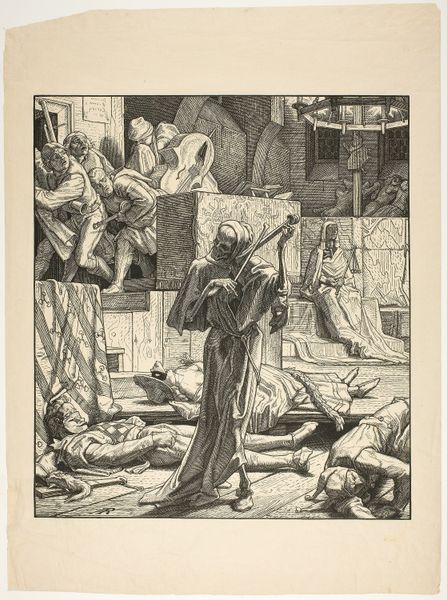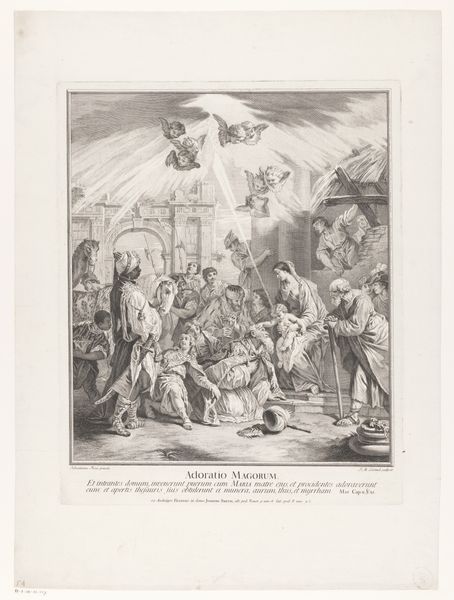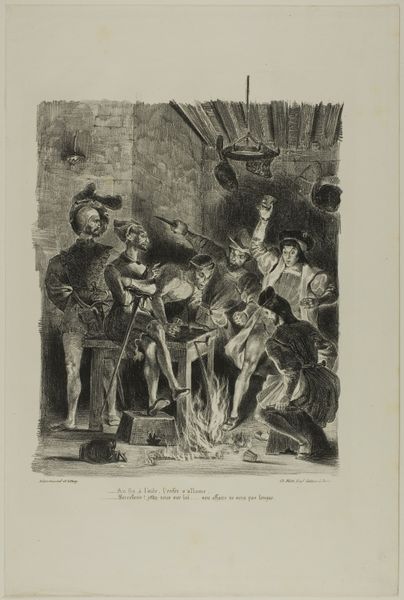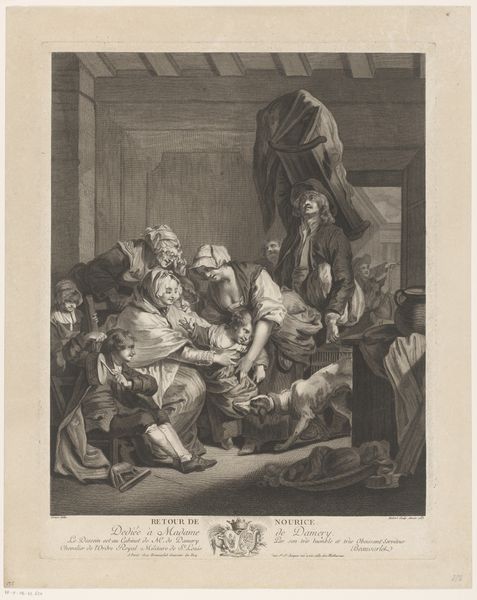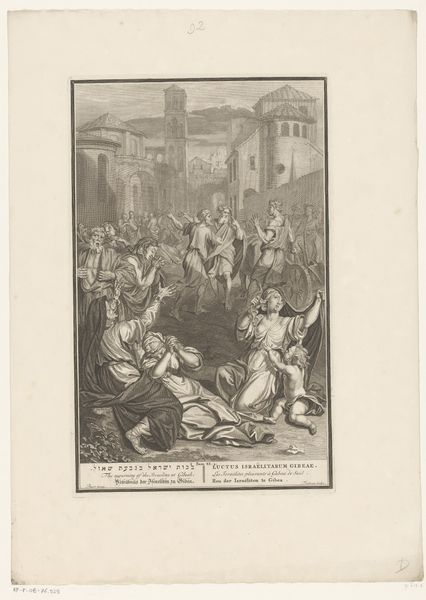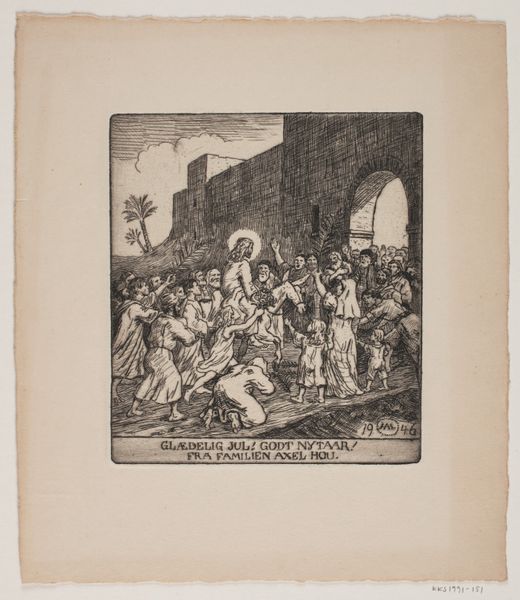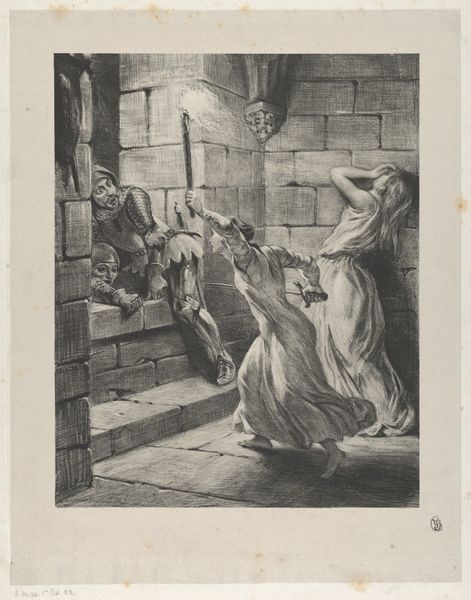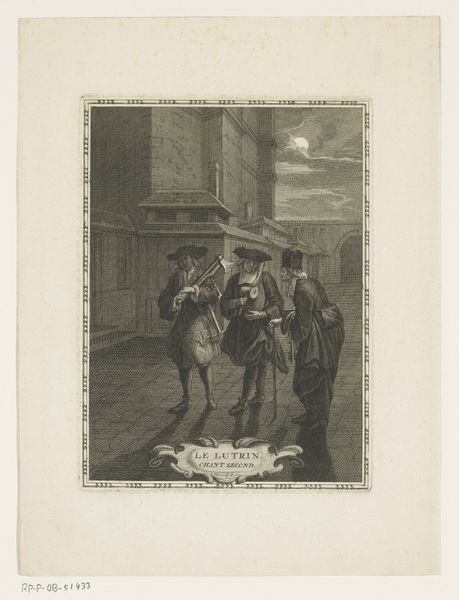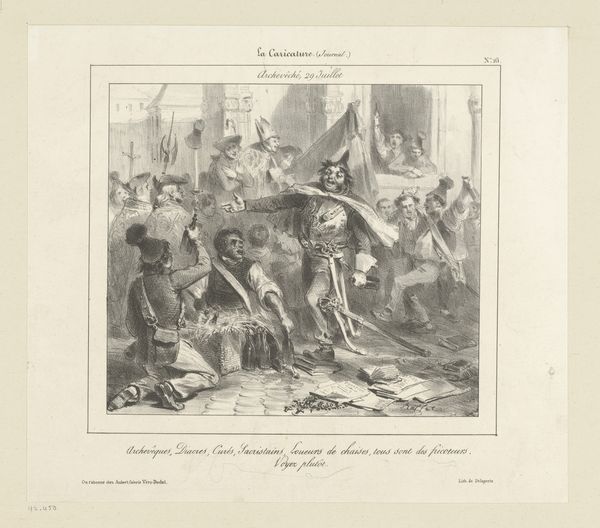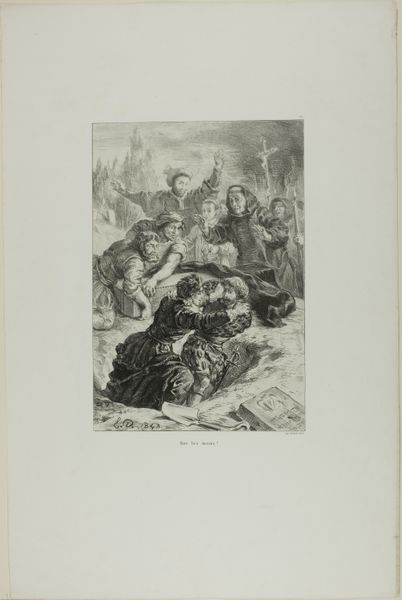
Dimensions: height 308 mm, width 274 mm
Copyright: Rijks Museum: Open Domain
Curator: Looking at Gustav Richard Steinbrecher's engraving, "Death Plays Music Among Dead Actors," created in 1851, the initial impression is, well, macabre. There's a sense of theatrical darkness hanging in the air, isn't there? Editor: Indeed. It feels like a commentary on power, the arts, and their inevitable entanglement with mortality and perhaps even more deeply a reflection on historical pandemics, the arts offering commentary during these times. Curator: Consider how the composition leads your eye. The skeletal figure of Death is centrally positioned, acting as the focal point but with bodies stacked vertically and horizontally across the picture plane, disrupting any Renaissance concept of logical perspective. What do you make of that choice? Editor: That layering, that deliberate disruption of space, strikes me as a conscious choice to amplify the suffocating atmosphere. There’s a certain hierarchy being presented to us—a world in which disease, the arts, and authority coalesce, indifferent to the suffering below. The composition isn't simply about aesthetics; it's a political statement. It’s unsettling. Curator: Notice Steinbrecher’s delicate but precise linework? He uses the density of lines to build tone and texture, creating a visual experience with dramatic tonal contrasts between figures and interior space. Editor: Yes, the romantic style emphasizes not only death as a "great leveler" as it may be traditionally read, but maybe death leveled unequally—it is artists, presumably actors, not political or powerful figures suffering as they're suffocated by social structures of power, here symbolized by death. Curator: It is striking to reflect on what role this work plays as an artwork in dialogue with history. Editor: Absolutely. It compels us to question what purpose art fulfills during such turbulent and inequitable epochs. A stark, but resonant piece to contemplate during our own age of reckoning.
Comments
No comments
Be the first to comment and join the conversation on the ultimate creative platform.
